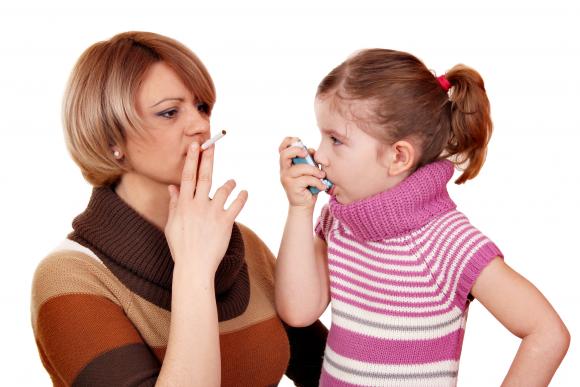PROVIDENCE, R.I. [Brown University] — A new study helps to answer the burning question of whether recently enacted indoor smoking bans in public areas have improved health. The research finds the bans are associated with a 17 percent overall reduction in the number of children visiting emergency departments with asthma complaints.
“Across 20 metropolitan areas that introduced clean indoor air regulations during the 2000s, fewer children were seen in the emergency rooms for asthma exacerbations,” said study senior author Theresa Shireman, a professor at the Brown University School of Public Health. “Clean indoor air laws not only reduce expensive health care use, but they also help parents and their children avoid time-consuming, stressful events.”
Shireman and co-authors Dr. Christina Ciaccio of the University of Chicago and Tami Gurley-Calvez of the University of Kansas argue that more cities should pass restrictions that prevent smoking in indoor public spaces such as restaurants. The three researchers performed the study while colleagues at Kansas.
“Children are in a very unique situation in that they have very little control over their environment,” Ciaccio said. “This study shows that even those short exposures to secondhand smoke in public spaces like restaurants can have a significant impact on asthma exacerbations.”
Before and after
The study in the journal Annals of Allergy, Asthma & Immunology examined emergency asthma visits at 20 pediatric hospitals in 14 states and Washington, D.C. For each hospital, the researchers counted the number of visits in the three years before and the three years after indoor smoking bans took effect.

"Combined with other studies, our results make it clear that clean indoor air legislation improves public health."
Image: Michael Cohea
In total, they counted 335,588 visits between 2000 and 2014. When making pre-ban and post-ban comparisons, they controlled for a variety of possible confounding factors including season and other temporal variations; patient gender, age and race; and Medicaid enrollment as a proxy for socioeconomic status.
In each area the numbers varied, with some showing declines, most remaining barely changed, and some showing increases — but in the preponderance of locales, rates declined. In the aggregate across all 20 hospitals, the reduction in visits became deeper with every year after bans went into effect: 8 percent one year after, 13 percent two years after and finally 17 percent after three years.
To see if they all they were measuring was a long-term decline that had nothing to do with smoking policy, the researchers ran a test where they arbitrarily picked Jan. 1, 2007, as a date to make their six-year before-and-after comparison for every hospital. That test yielded no significant decline in visits, meaning that there is no general nationwide decline in asthma emergencies.
The researchers acknowledged that the study only shows an association and doesn’t prove that the bans caused the drop in emergency room visits, but Shireman said the evidence strongly suggests it. Secondhand smoke, after all, is known to be an asthma trigger, the researchers noted.
“Combined with other studies, our results make it clear that clean indoor air legislation improves public health,” Shireman said.

